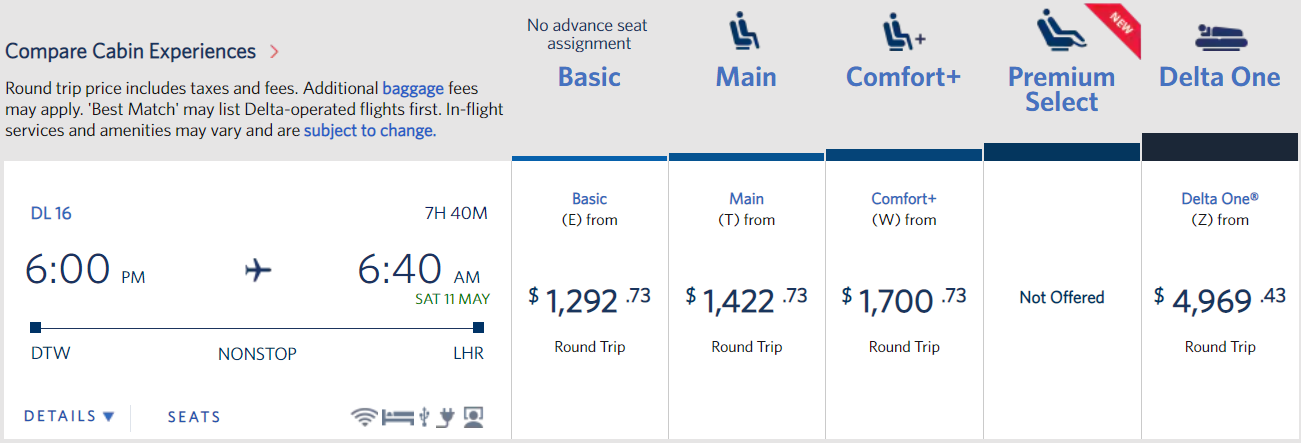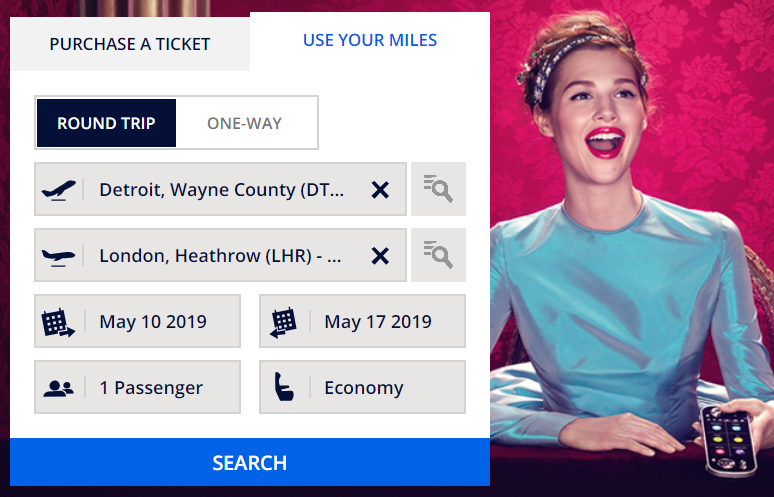Capital One has long touted that their Venture card earns 2 miles per dollar everywhere and with no blackout dates. That’s technically true, but a bit deceiving in that Capital One “miles” are not airline miles at all. Instead, they’re basically pennies that can be used only for travel. When you incur a travel expense with your Venture card, you can erase that charge with your “miles” at a rate of one “mile” per cent of travel expenses.
Now, Capital One has confused things a bit more (but in a good way) by adding airline mile transfer partners. Transfer rates are either 2 Capital One miles to 1.5 airline miles or to 1 airline mile, depending upon which airline you transfer to. In other words, the Venture card doesn’t earn 2 airline miles per dollar everywhere. Instead it earns either 1.5 or 1 airline mile per dollar everywhere depending upon the airline. You can find a full list of Capital One transfer partners here.
Don’t get me wrong: more choice is a great thing. I just think that Capital One’s insistence on naming their points “miles” is now more confusing than ever.
Now that Capital One “miles” can be converted to airline miles, cardmembers have more options for booking flights. In many cases, you’ll be better off booking flights the old way: pay for a flight with your Venture card and then erase the charge with your “miles”. In some cases, especially when booking premium cabin flights or last minute flights, you’ll do better transferring your “miles” to airline miles.
In this post, I’ll show you how to decide whether to use Capital One “miles” or airline miles when booking a Delta flight. The same exact techniques will work when booking flights on any SkyTeam partner including Air France, KLM, Alitalia, Korean Air, etc.
I’ll follow up with similar posts regarding booking American Airlines OneWorld flights and United Star Alliance flights.
Here are the steps for deciding whether to use “miles” or miles:
- Find the best paid flight option. I usually use Google Flights for this purpose.
- Find the best award flight option.
- Compare the number of Capital One points needed for either option to make your decision.
Now let’s take a specific example. For simplicity, let’s say I want to fly Detroit to London, round trip, on specific dates, and I highly prefer nonstop flights. The latter constraint is there just to simplify the example below.
Step 1 (example): Find the best paid option
In general, I like to use Google Flights to find the best paid flight options. Sometimes other sites like Kayak will find even better prices when you book Delta through a partner website (e.g. via KLM or Virgin Atlantic). But, for simplicity, let’s assume that Delta.com shows the best prices for the dates I want to travel:

The best paid price, in this example, is basic economy for $1,292.73. If we want the luxury of being able to select seats in advance, and to optionally pay to change the flight at a later date, the best price is $1,422.73 for a main cabin (economy) ticket.
The main cabin option would cost 142,273 Capital One “miles”.
Step 2 (example): Find the best award flight option
Capital One has several transfer partners with which it’s possible to book Delta flights: AeroMexico, Air France, and Alitalia. In most cases Air France offers the best award prices, so we’ll look to Air France Flying Blue to find the best award flight option.
In order to search Air France’s website for award flights, it’s necessary to log into your Air France Flying Blue account. If you don’t already have an account, it’s a good idea to create one now (it’s free) just in case you ever need it. Here’s the signup link.
Once you are logged in, you can select “Use Your Miles” and enter your flight parameters:

The above search led me to three options:
Economy both ways (with layover in Boston on outbound journey):

Business outbound, economy return (nonstop flights):

Business class round trip:
Step 3 (example): Compare the number of Capital One points needed for each option
Figuring out the number of Capital One “miles” needed for a paid flight is easy. Simply remove the decimal point and move the comma to the thousandth place (and add additional commas as needed). For example, a flight that costs $1,292.73 would require 129,273 Capital One miles.
So, we have the following paid options in our scenario:
- Basic Economy ($1,292.73): 129,273 Capital One miles
- Regular Economy ($1,422.73): 142,273 Capital One miles
- Business Class / Delta One ($4,969.43): 496,943 Capital One miles
Figuring out the number of Capital One “miles” needed for an award flight is a bit harder. You first need to figure out how many Capital One “miles” you need to convert to airline miles. Then you need to figure out how many are needed to cover taxes and fees.
Capital One miles convert to Air France miles at a rate of 1,000 to 750. So, you can divide the required number of Air France miles by 0.75 and then, if needed, round up to the nearest 100. For example, the economy award requires 54,000 Air France Flying Blue miles, so divide 54,000 by 0.75 = 72,000 Capital One miles.
For the taxes and fees, simply remove the decimal place. For example, $185.75 in taxes and fees can be covered with 18,575 Capital One miles.
So, given the award prices we found earlier, we can calculate the required numbers of Capital One miles:
- Economy with outbound layover (54K miles + $185.75): 72K + 18,575 = 90,575 Capital One Miles
- Business outbound, economy return (88.5K miles + $185.75): 118K + 18,575 = 136,575 Capital One Miles
- Business round trip (127K miles + $305.62): 169,400 + 30,562 = 199,962 Capital One Miles
Now lets sort all of our results by the number of required Capital One miles:
- Economy award with outbound layover (54K miles + $185.75): 72K + 18,575 = 90,575 Capital One Miles
- Basic Economy ($1,292.73): 129,273 Capital One miles
- Business award outbound, economy return (88.5K miles + $185.75): 118K + 18,575 = 136,575 Capital One Miles
- Regular Economy ($1,422.73): 142,273 Capital One miles
- Business award round trip (127K miles + $305.62): 169,400 + 30,562 = 199,962 Capital One Miles
- Business Class / Delta One ($4,969.43): 496,943 Capital One miles
As you can see above, the cheapest option, by quite a large margin, is an economy award with a layover in Boston.
If a layover isn’t an option, the next cheapest option is the paid Basic Economy flight for 129,273 Capital One miles. That said, you can pay just 7,302 Capital One miles more (about $73) for a much better option: 136,575 Capital One miles for a non-stop lie flat business class flight to London with a nonstop economy return. This option is even cheaper than the regular economy paid option!
And if your heart is set on flying business class both ways, there’s simply no comparison. The paid flight would cost you 496,943 Capital One miles whereas transferring “miles” to Air France Flying Blue miles would cost you only 40% as much: 199,962 Capital One Miles.
The above analysis doesn’t take into account the fact that paid flights earn miles or that they can be used to help achieve elite status. On the other hand, it also doesn’t take into account the fact that booking award flights with Air France is much better than paid flights in that the awards are almost fully refundable. Air France charges only €45 (about $51 at the time of writing) for award changes and redeposits!






How do I transfer miles to airlines that aren’t Capital One’s Partners? I am still confused.
Air France is a Capital One partner. You transfer miles to Air France and then book Delta flights from Air France’s website.
[…] Transfer or Book Revenue Ticket – Capital One Case Study […]
I am quite jealous of all the good Euro flights out of Detroit. I live in Nashville and to get a saver award flight to Paris, I need to fly to Detroit first (there are other airports available, Detroit just had the best and most saver award options for 4 economy tickets. I am hoping someday BNA will become a true international airport.
But what about Alitalia or Aeromexico miles? I wouldn’t necessarily assume
This is intended to be accessible to beginners. In most cases I believe that Alitalia and Aeromexico will cost more. The simple solution is to use Air France or none at all. My assumption is that advanced readers can easily generalize the ideas here to also include searches through the other SkyTeam partners. But, honestly, I wouldn’t bother in most cases.
Sounds like a good idea to open an Air France account. Are there complications in using AF for Delta awards, like there is for using BA on AA like it has to be a SAAver fare, not an AAnytime fare, in order to use partner miles? Do you have a post on that subject?
That’s not unique to BA/AA — there usually needs to be saver-level availability to book partner awards with any partner airline combo.
The thing with Delta is that they don’t have an award chart, so the only way to know if there is saver availability is to search on partner sites like Air France or Virgin Atlantic. If you see the seats available to book on the Air France website, you’re good to go. You can’t go by the number of miles Delta is charging as the cheapest seats aren’t always available to partners and the most expensive ones aren’t always unavailable. Delta is a weird exception case (as I suppose is also the case with booking Air France flights with Delta or Alaska miles these days since Air France also has variable pricing, but that’s a chat for another day….)
It also does not take into account the big A – Avalability
You can always buy a ticket with pennies – not with air miles
However if we play the game right, it is a no-brainer.
I wrote it with the intention of it being accessible for beginners. So, the idea is that when they run a search on Air France’s website, the availability that is there is what they get.